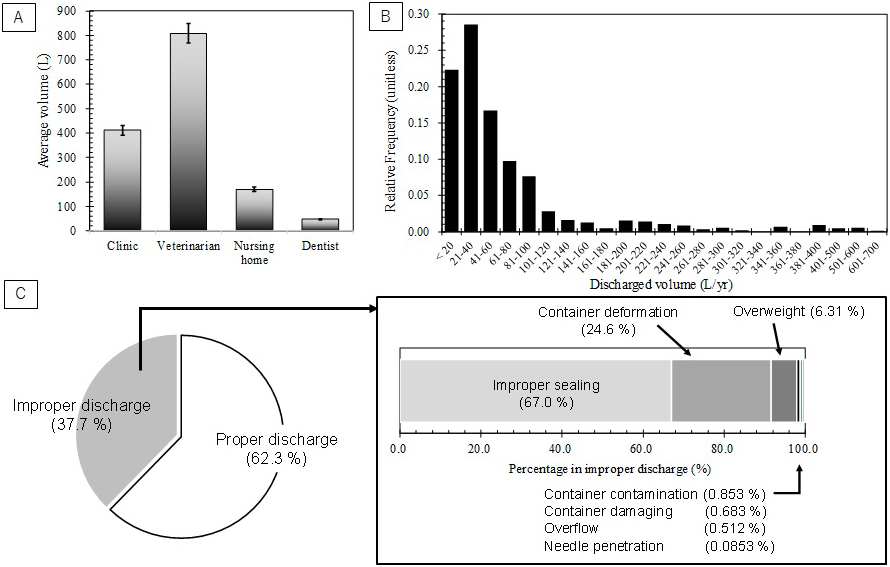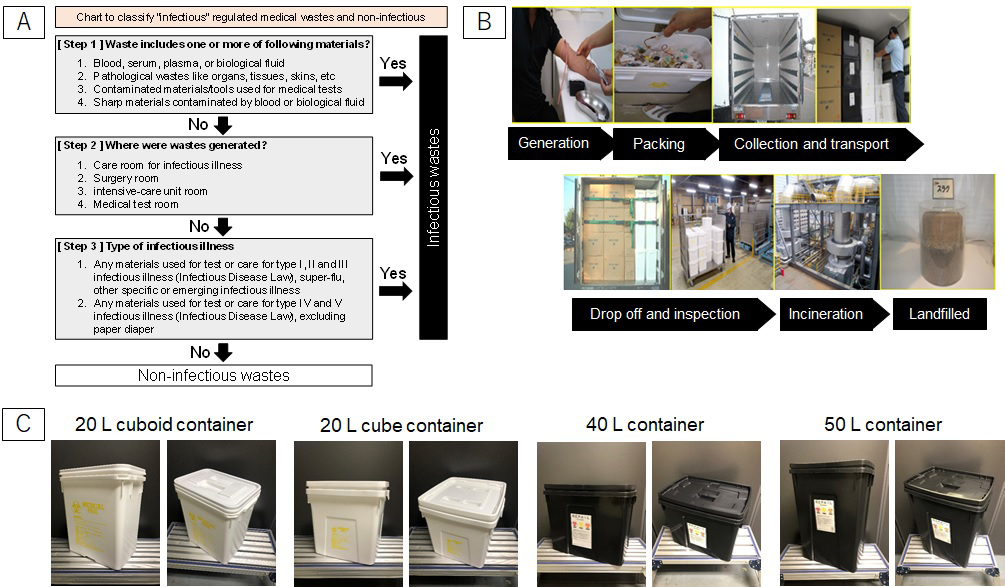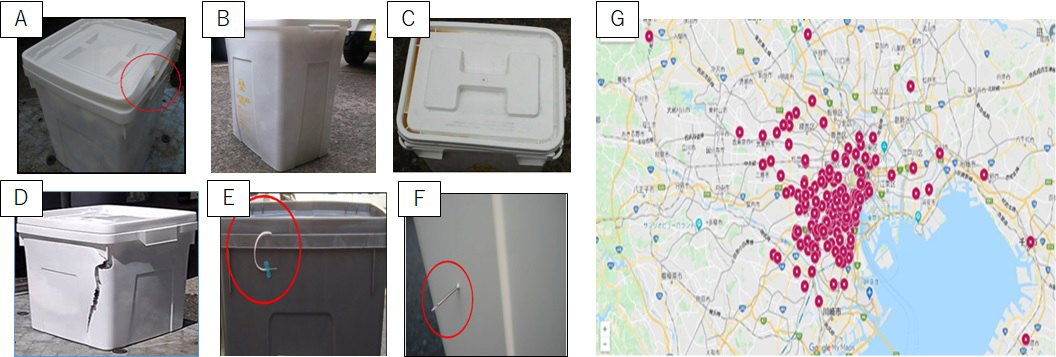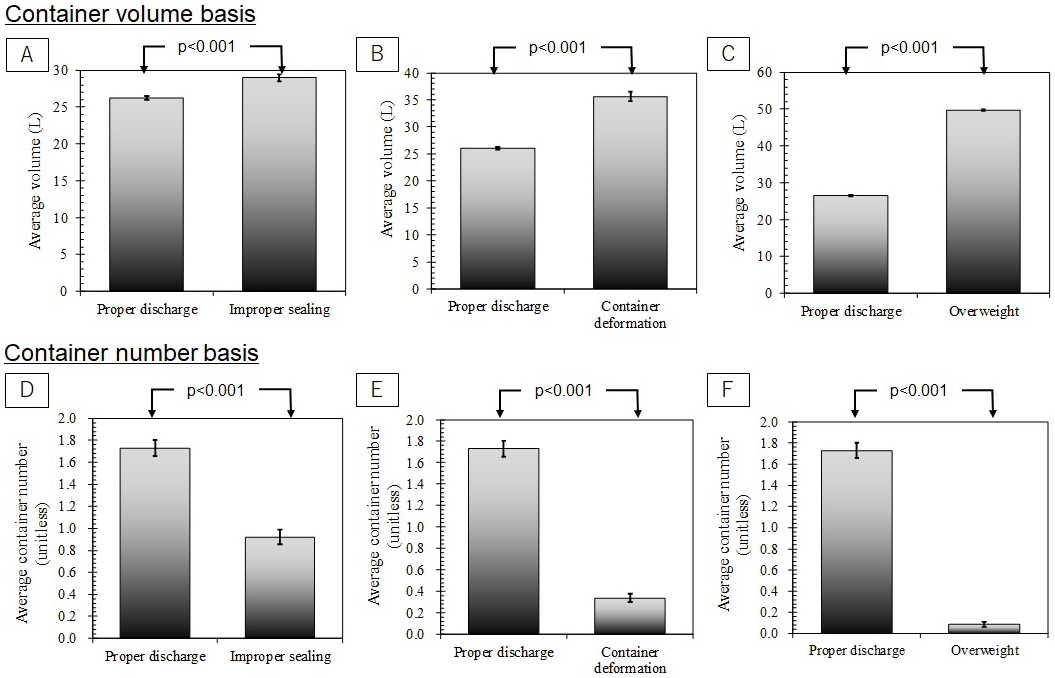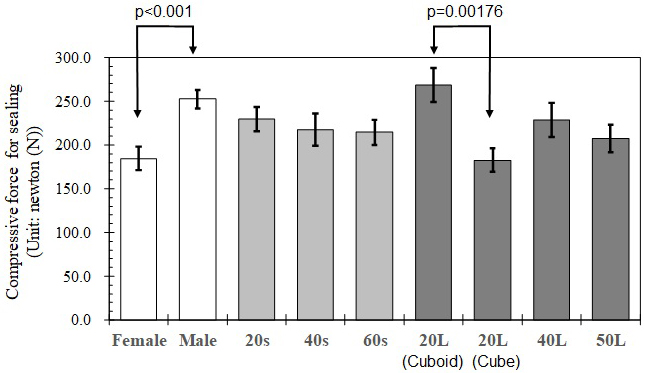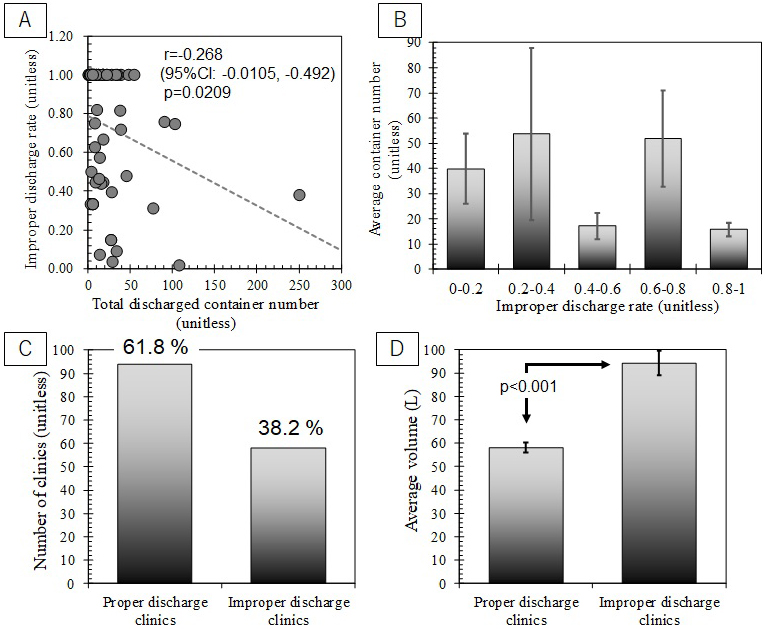Figure 3. (a) Average discharged container volumes from small-scale medical institutions (clinic, veterinarian, nursing home, and dentist), (b) Relative frequency distribution of average waste volumes, and (c) Inspection results of RMW containers (Proper discharge, improper sealing, container deformation, overweight, container contamination, container damaging, overflow, and needle penetration).
From: Motivation to Decrease Discharge Cost Results in Improper Discharge of Regulated Medical Wastes from Small Clinics: Inspectional and Statistical Evidence in the Tokyo Metropolitan Area
